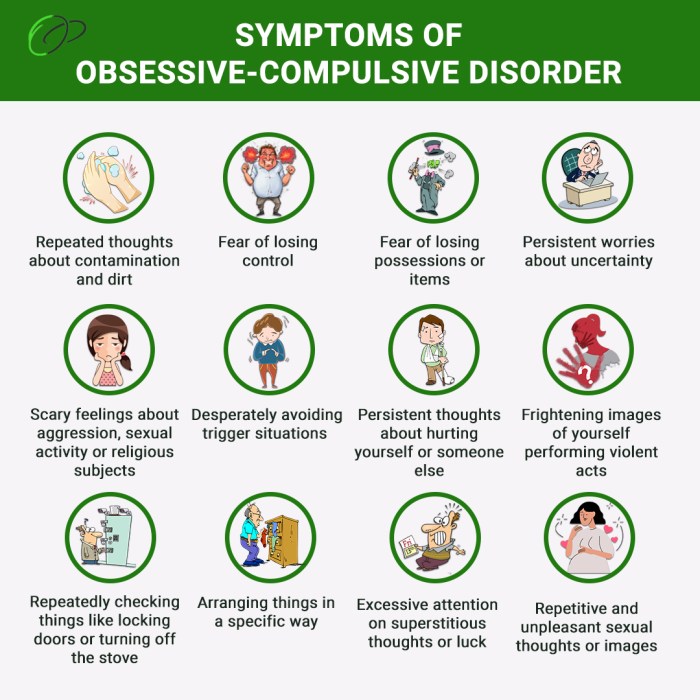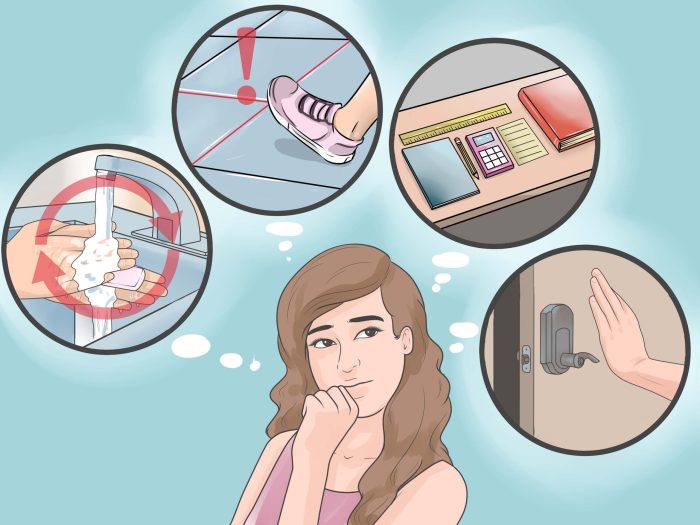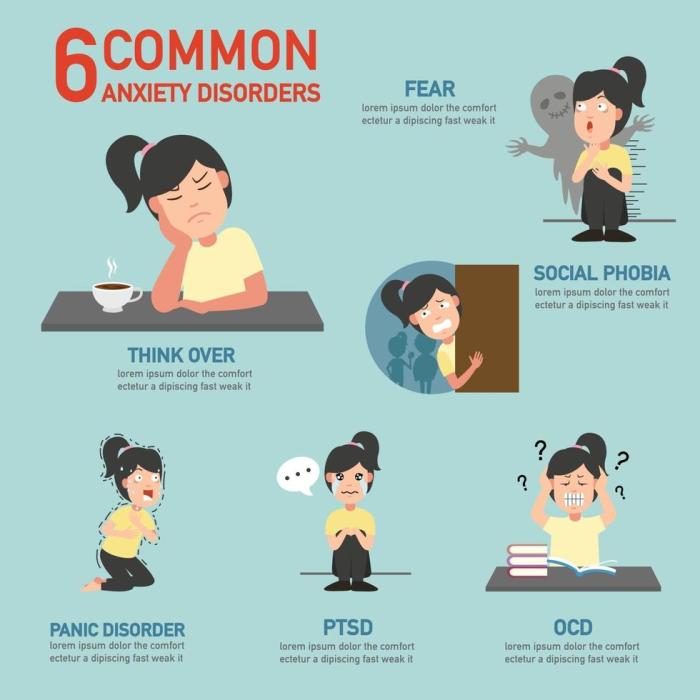Occupational therapy and obsessive compulsive disorder – Occupational therapy and obsessive-compulsive disorder (OCD) are inextricably linked, with occupational therapy offering a holistic approach to managing the challenges posed by OCD. This guide delves into the intricacies of occupational therapy for OCD, exploring its assessment, interventions, outcome measurement, and case studies, providing a comprehensive understanding of this therapeutic approach.
OCD, a prevalent mental health condition, manifests in intrusive thoughts and repetitive behaviors that significantly impact individuals’ lives. Occupational therapy recognizes the profound impact of OCD on daily functioning and aims to empower individuals to engage in meaningful activities, reduce symptoms, and enhance their overall well-being.
Occupational Therapy Assessment for OCD

The assessment process for OCD typically begins with a comprehensive interview with the individual. The interview will cover the individual’s symptoms, history of OCD, and current functioning. The occupational therapist will also observe the individual’s behavior and interactions with others.
In addition to the interview, the occupational therapist may also use a variety of assessment tools to help diagnose OCD and assess its severity. These tools may include:
- The Yale-Brown Obsessive Compulsive Scale (Y-BOCS)
- The Obsessive Compulsive Inventory-Revised (OCI-R)
- The Maudsley Obsessive Compulsive Inventory (MOCI)
The results of the assessment will help the occupational therapist develop a treatment plan that is tailored to the individual’s specific needs.
Occupational Therapy Intervention for OCD: Occupational Therapy And Obsessive Compulsive Disorder

The goal of occupational therapy for OCD is to help individuals manage their symptoms and improve their quality of life. Occupational therapists may use a variety of different interventions to achieve this goal, including:
- Cognitive-behavioral therapy (CBT)
- Exposure and response prevention (ERP)
- Mindfulness-based interventions
- Occupational retraining
- Adaptive equipment training
The type of intervention that is used will depend on the individual’s specific needs and preferences.
Cognitive-behavioral therapy (CBT)
CBT is a type of therapy that helps individuals identify and change their negative thoughts and behaviors. In CBT for OCD, the therapist will help the individual to:
- Identify their obsessions and compulsions
- Understand the relationship between their thoughts, feelings, and behaviors
- Develop coping mechanisms to manage their symptoms
Exposure and response prevention (ERP)
ERP is a type of therapy that involves gradually exposing individuals to their feared situations or objects while preventing them from performing their compulsions. This helps individuals to learn that their fears are not as dangerous as they seem and that they can cope with their anxiety without resorting to compulsions.
Mindfulness-based interventions
Mindfulness-based interventions are a type of therapy that helps individuals to focus on the present moment and to accept their thoughts and feelings without judgment. This can help individuals to reduce their anxiety and to better manage their OCD symptoms.
Occupational retraining, Occupational therapy and obsessive compulsive disorder
Occupational retraining can help individuals to develop new skills and strategies to perform everyday tasks that are difficult for them due to their OCD symptoms. For example, an occupational therapist may help an individual to develop a new routine for getting ready for work or to learn how to use adaptive equipment to make tasks easier.
Adaptive equipment training
Adaptive equipment can help individuals to perform everyday tasks that are difficult for them due to their OCD symptoms. For example, an occupational therapist may recommend that an individual use a weighted blanket to help them sleep or a fidget toy to help them manage their anxiety.
General Inquiries
What is the role of occupational therapy in managing OCD?
Occupational therapy focuses on enabling individuals with OCD to engage in meaningful activities, reduce symptoms, and improve their overall functioning.
How does occupational therapy assess OCD?
Occupational therapists use a variety of assessment tools, including interviews, observations, and standardized measures, to evaluate the impact of OCD on daily functioning.
What types of interventions are used in occupational therapy for OCD?
Occupational therapists employ various interventions, such as cognitive-behavioral therapy, exposure and response prevention, and activity analysis, to address the specific challenges faced by individuals with OCD.
How is progress measured in occupational therapy for OCD?
Outcome measures, such as standardized assessments and self-report questionnaires, are used to track progress and evaluate the effectiveness of interventions.
